Welcome to the July edition of the Motive Monthly Economic Report. What follows is an analysis of the major trends in the supply chain and economy across the Motive platform of 100,000 customers during the past month. Motive’s transportation and logistics data is a reflection of consumer demand and therefore, a leading indicator of overall economic stability and trends. Keep reading for a front-seat view into key factors currently influencing the U.S. economy.
Motive Predictions:
- Retail sales will be higher this July vs July of 2023 as the 4th of July and Amazon Prime Day drive sales.
- Retailers must change their inventory management strategy by the end-of-year holiday season, as freight rates, similar to what’s happening with ocean rates now, rise and make last-minute restocking more expensive.
- We’ll see some consumer prices go up by Q2 of 2025 due to higher supply chain costs.
- The freight recession is on its way out and the trucking market will steadily move in a positive direction in the second half of the year.
Top Findings:
- Retailers, especially brick and mortar, are preparing for a strong July as they aggressively restock inventories at a markedly higher rate compared to 2023.
- Retailers continue to pursue low inventory strategies as last-minute restocking persists.
- The number of new entrants to trucking is stabilizing as the market moves toward positive growth.
Retailers anticipate record July sales fueled by July 4th and Amazon Prime Day
June saw one of the strongest month-over-month jumps to date for retailer restocking, according to Motive’s Big Box Retail Index. The metric, which tracks visits to warehouses of the top 50 U.S. retailers, jumped 10.8% since May, and 16% year-over-year. While these rates typically rise in summer months, this year’s surge indicates retailers are expecting bigger summer sales than last year and we predict they’ll see record sales for the month of July.
The 4th of July holiday, Amazon Prime Day, and other retailers’ competing promotions are what most likely drove the increase. One of the biggest retail moments of the year, Amazon Prime Day, drives many retailers to run competing discounts and promotions. This year, we’re seeing retailers bring in inventory at a markedly larger spike compared to 2023 as they gear up for higher demand and strong sales.
When it comes to performance across sectors, department stores, apparel & electronics (+32.9% YoY), and home improvement (+24.4% YoY) were top performers in June. Grocery & Superstores and Discount Retailers & Wholesalers also jumped 22.1% and 13% YoY respectively. We’re seeing particularly strong momentum in brick-and-mortar retail as these stores anticipate a very strong summer peak season. For example, department stores, electronics, and apparel retailers with brick-and-mortar locations saw a 13.8% jump heading into July, representing a 33% YoY climb.
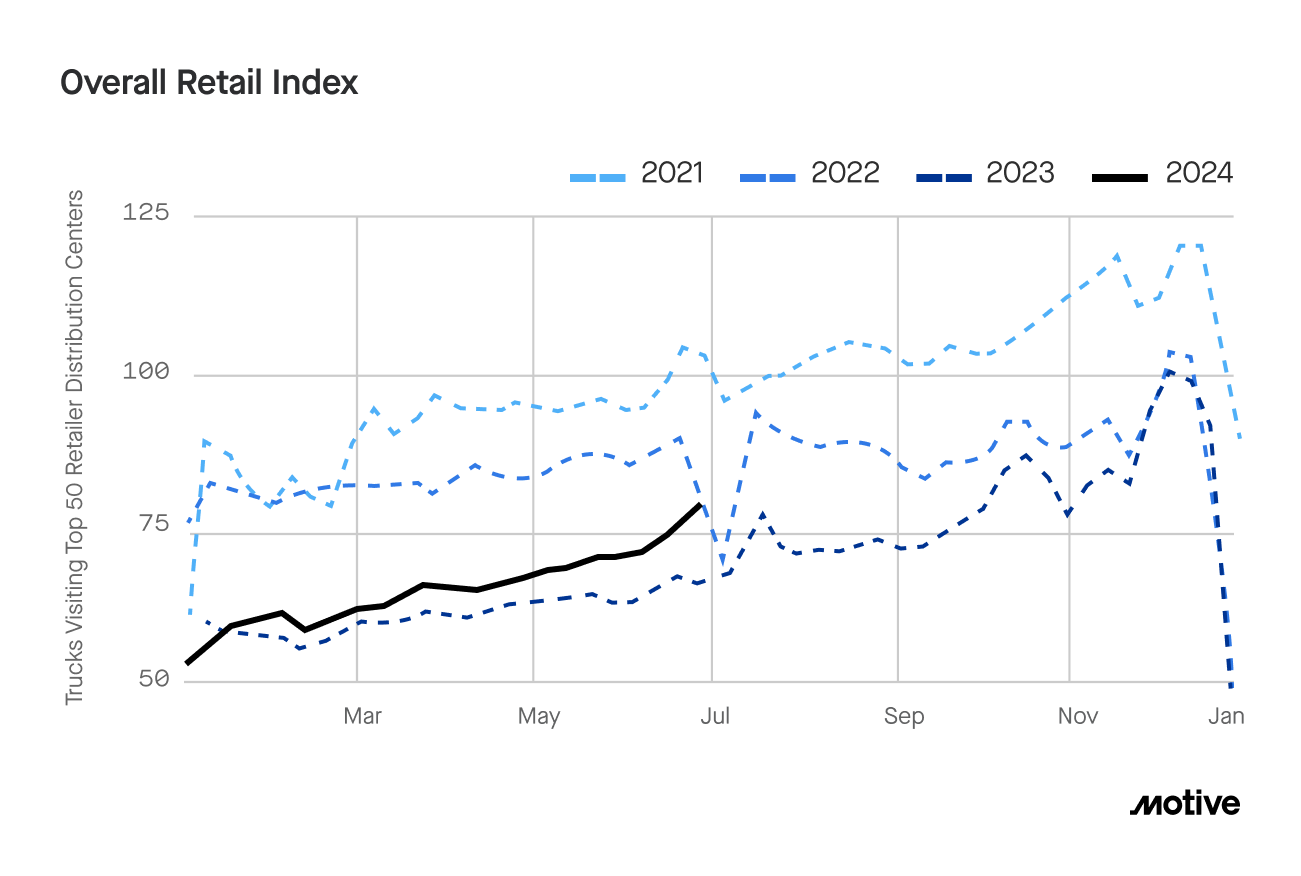
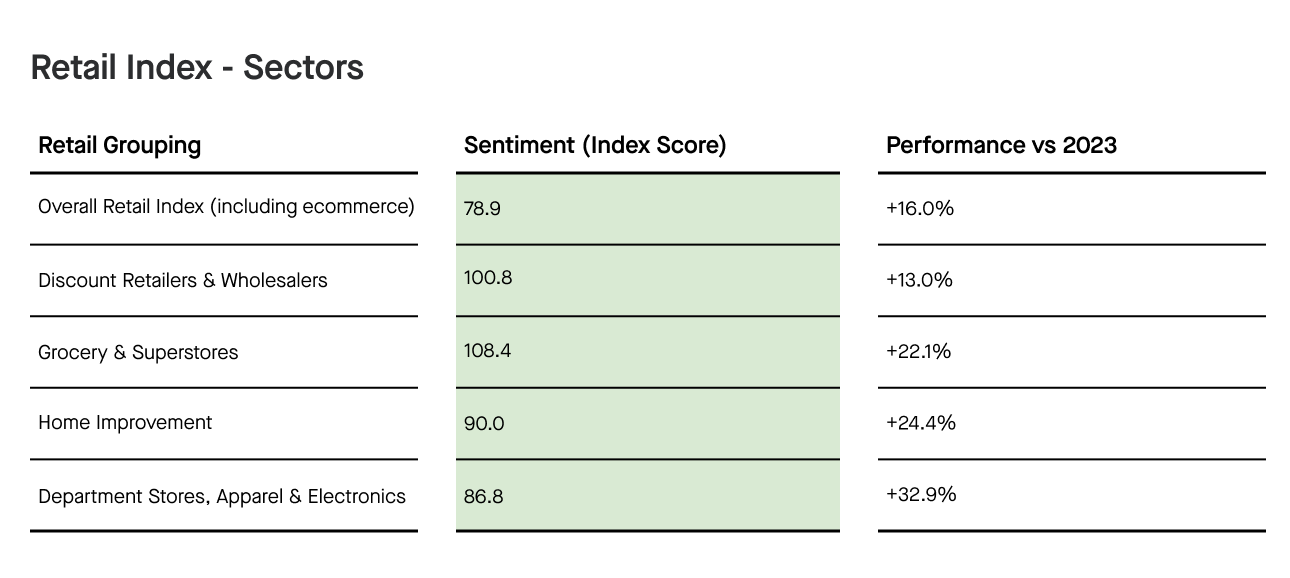
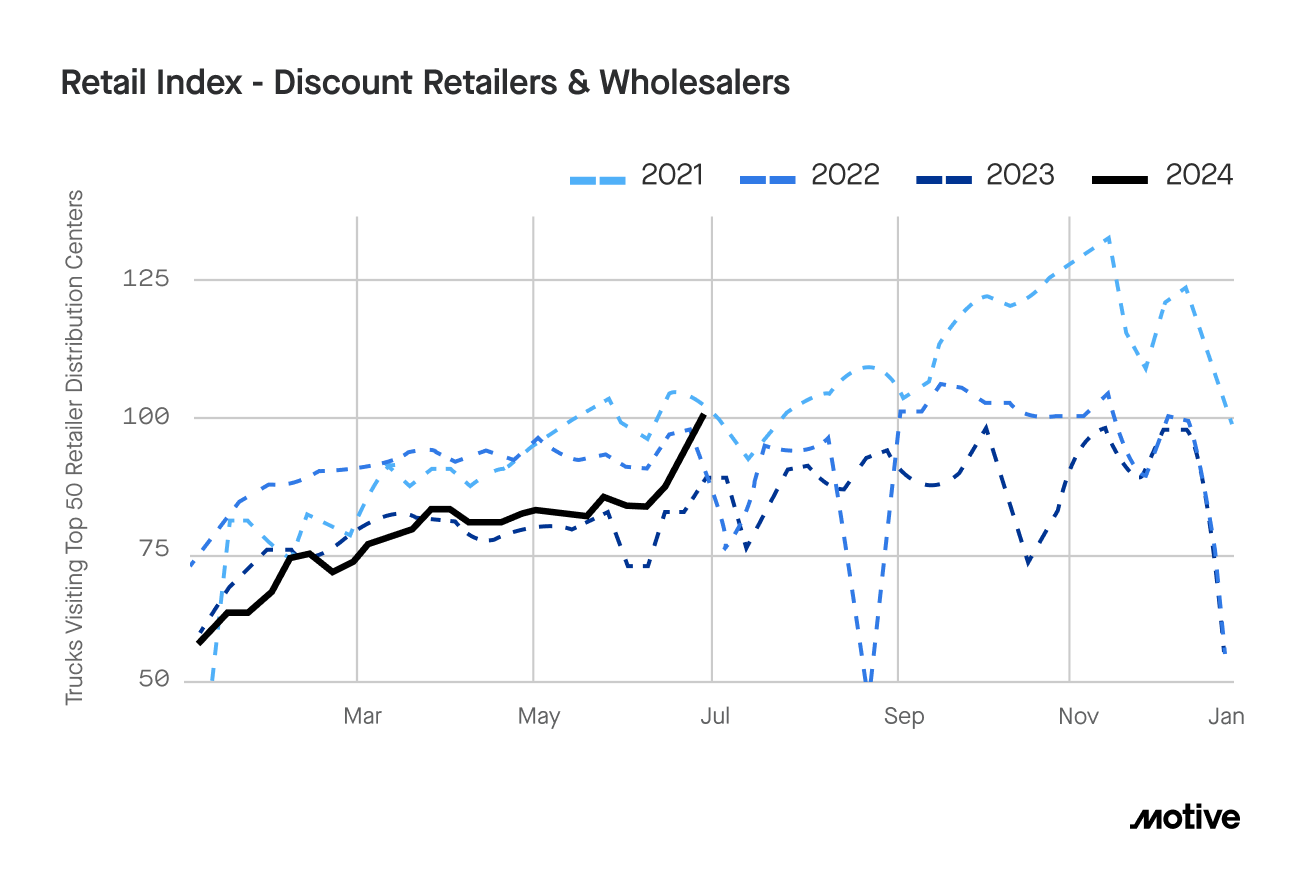
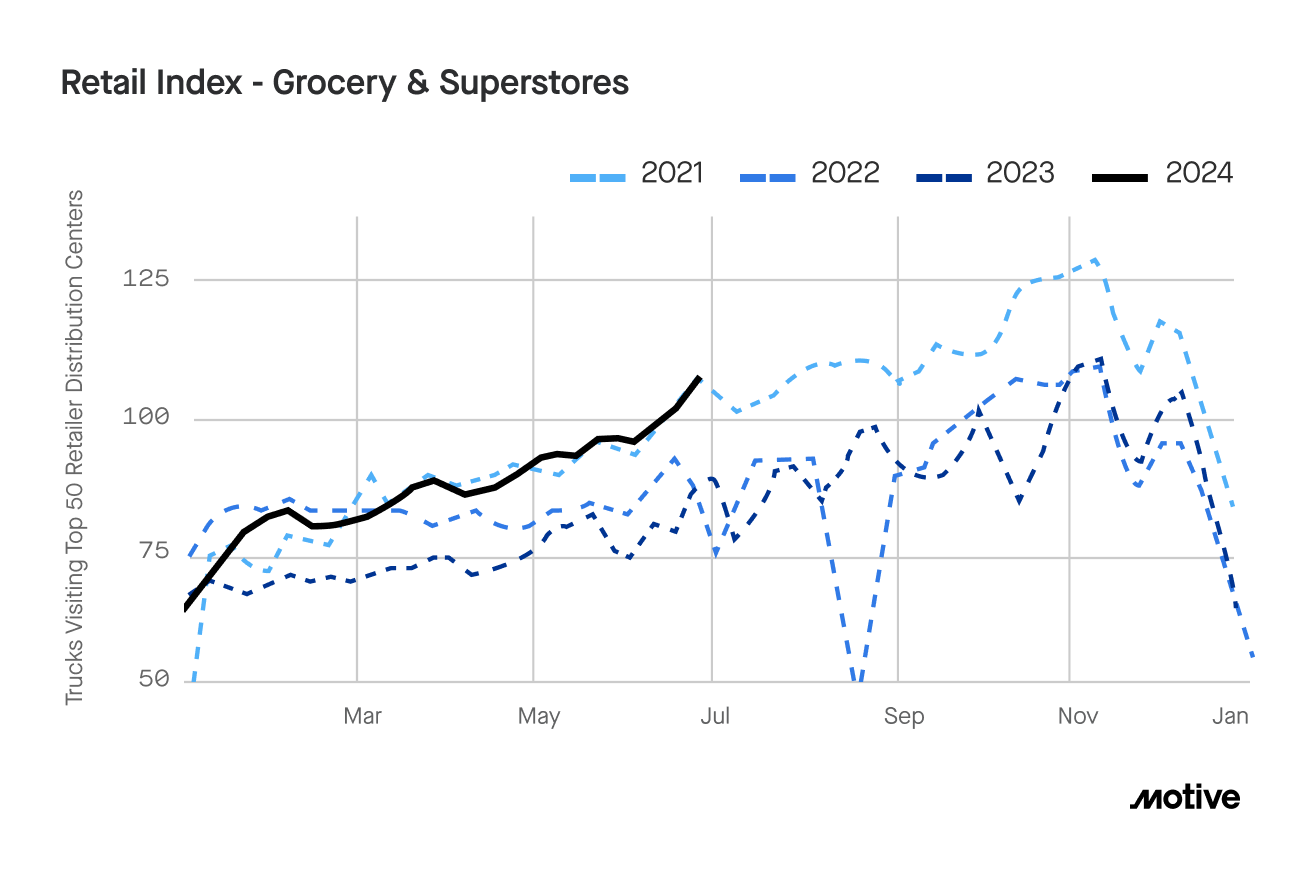
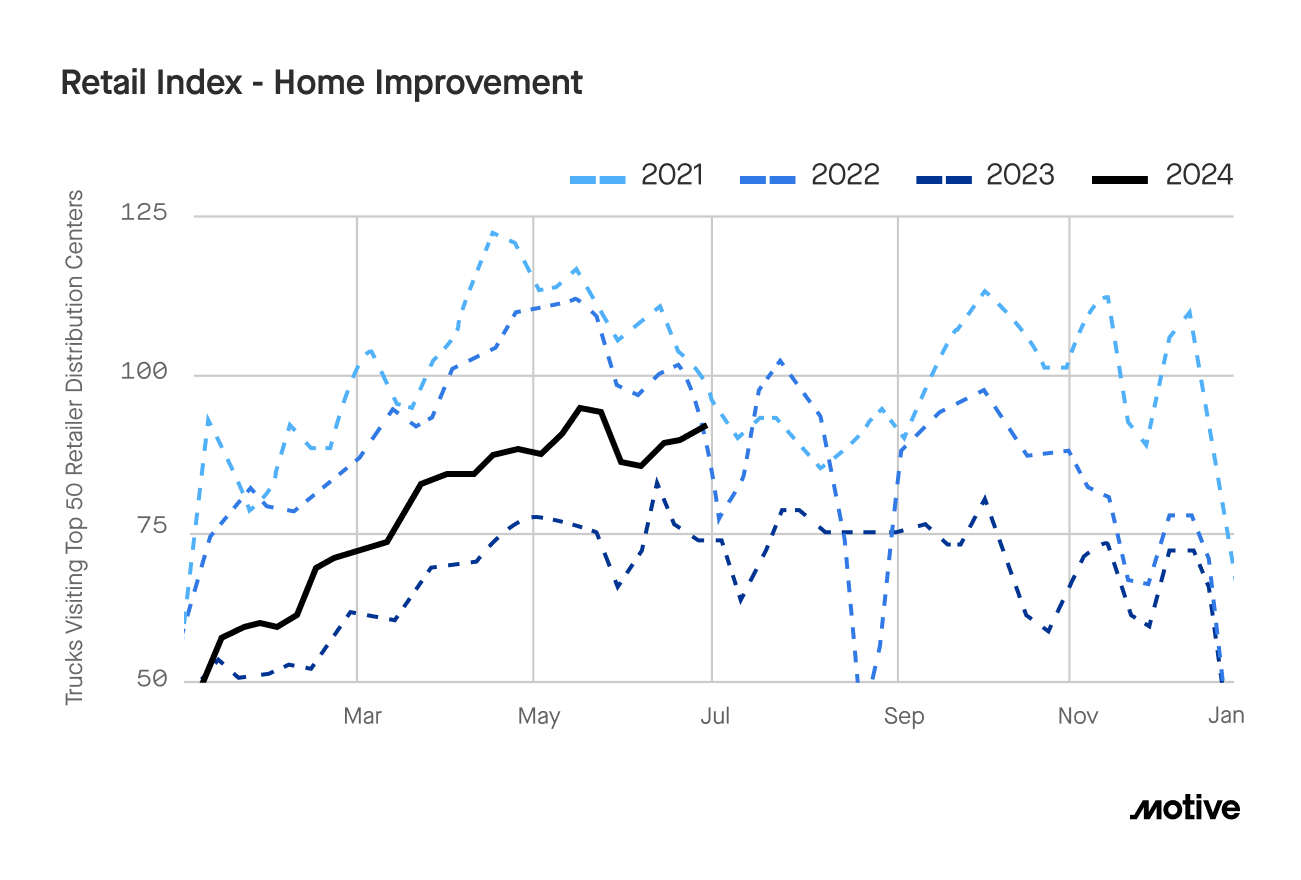

Motive predicts retailers will need to change inventory management strategies by the 2024 holiday season
Data from the St. Louis Fed reveals that retailers are continuing their low-inventory approach and waiting to bring inventory into stores. As we shared last month, generationally low freight costs have allowed stores to restock at the last minute in response to demand. The latest data shows that inventory-to-sales ratios remain stable at 1.28, signaling that retailers are more accurately predicting demand after the volatility of the last few years. But just as we have seen ocean rates rise recently, we anticipate trucking rates will increase in the second half of this year. This will, in turn, force many retailers to adjust their inventory management strategy, holding on to more inventory longer as later restocking becomes more expensive. We expect to see this change take hold by the holiday season.

Motive predicts consumers will see increased prices by Q2 of next year
Higher trucking rates will also impact consumers, as some retailers will likely need to start passing higher logistics costs to consumers by the end of Q1 or early Q2 next year. How companies have approached their inventory strategy up to this point will partially dictate this. Those who over-committed to a low-inventory strategy (i.e., last-minute restocking while the spot market was cheap and there was excess capacity) will feel a greater shock and be forced to raise prices sooner. Retailers with more diversified and flexible inventory strategies will likely fare better.
Freight recession continues to fade as trucking growth begins to resemble 2019 rates and trucking jobs stabilize; growth will hit net positive by Q4
In June, 7,621 carriers entered the trucking market, which is 10% less than in May but in line with typical decreases we see for this time of year. The percentage of new carriers (2.1%) is similar to June 2019 (2.25%), indicating more stable growth. 1,972 carriers left the market in June, a 60% increase from May, but still 58% fewer exits than in December 2023, indicating a strengthening market. Overall, Q2 saw half as many carrier exits (4,039) compared to Q1 (8,400).
We anticipate fewer exits next month and for this more stable growth to continue. We maintain our prediction that the market will see net-positive growth by Q4.
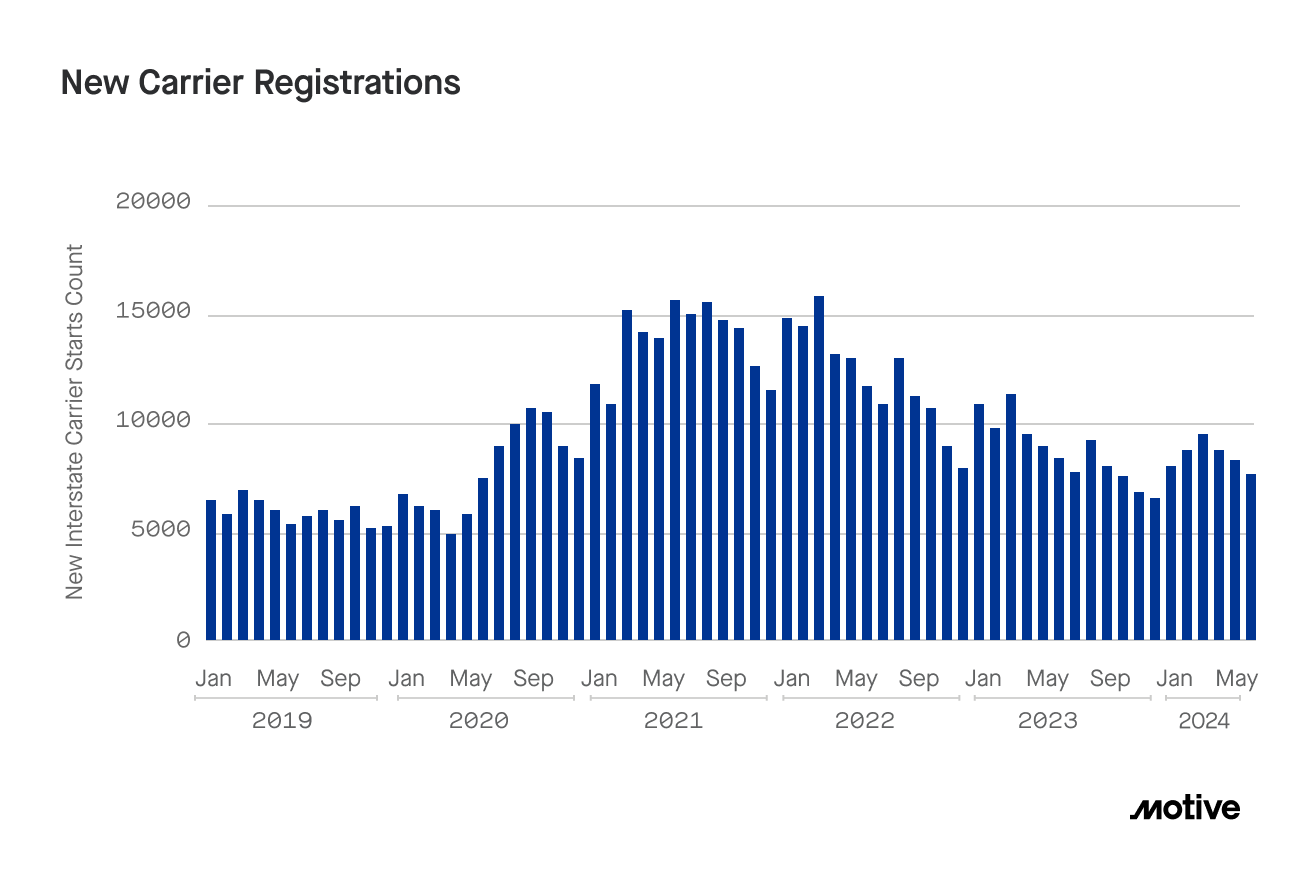
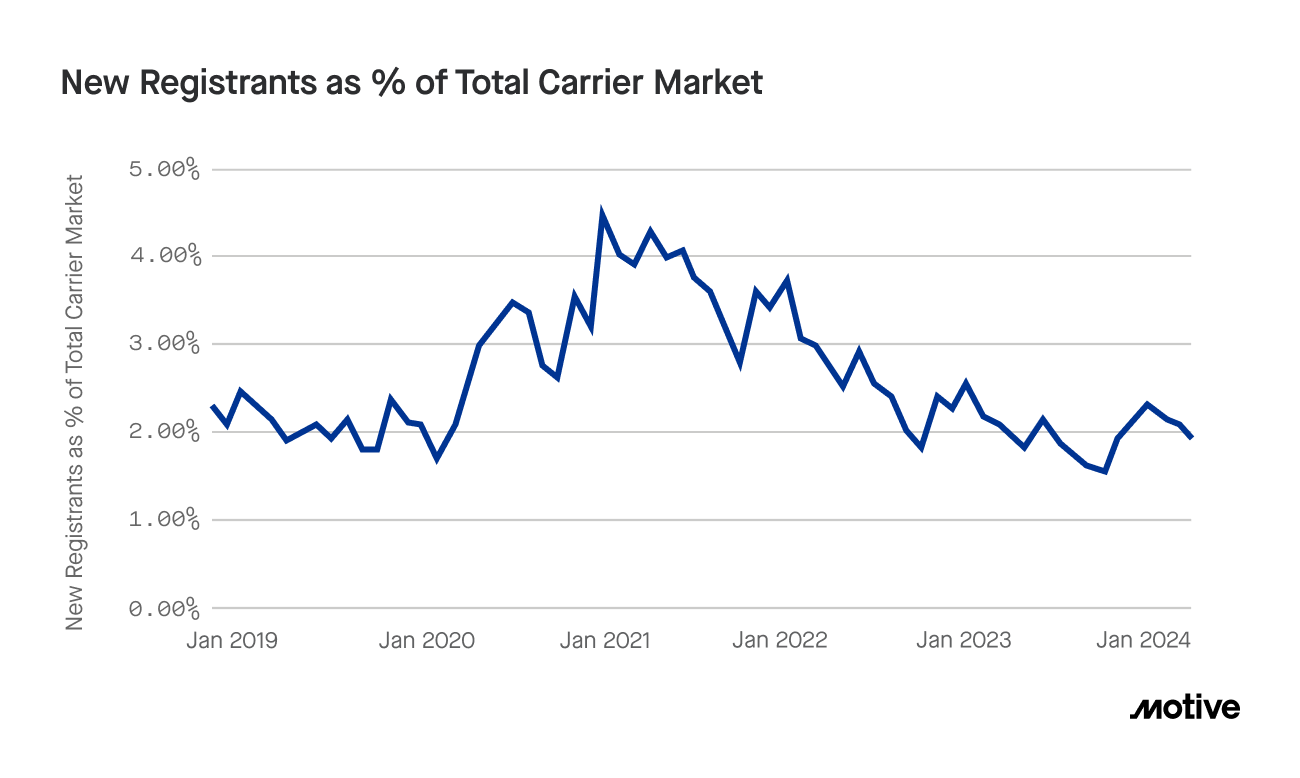
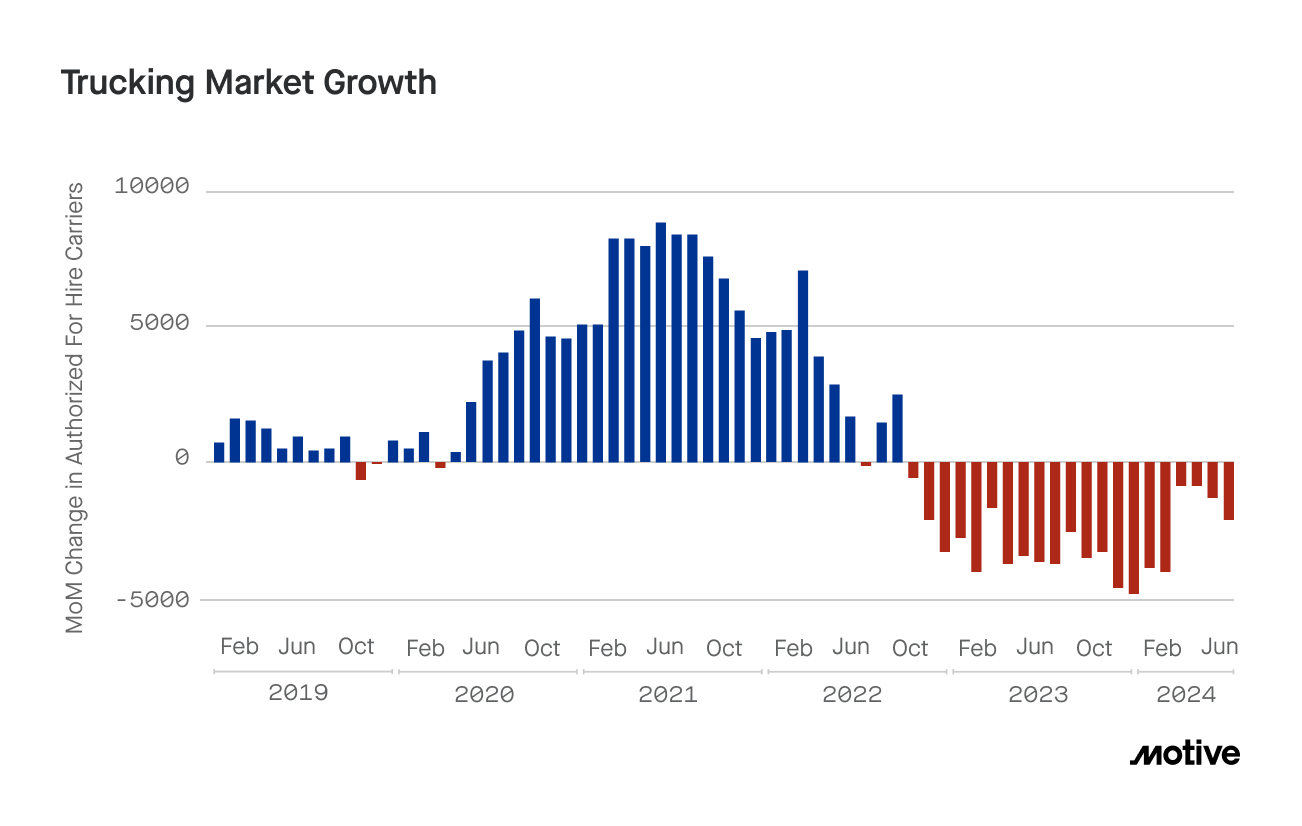
Summary
Rising trucking rates, trucking transportation job stability, and what we predict to be a very strong July across retail sales, especially brick and mortar, are all pointing to a rebounding freight market. We predict this momentum will continue through the summer, and will be closely following what it means for carriers, shippers, and consumers in the coming months.
Data Methodology
The Motive Monthly Economic Report uses aggregated and anonymized insights from the Motive network and publicly available government data from the Federal Motor Carrier Safety Administration, U.S. Census, and U.S. Department of Transportation.




